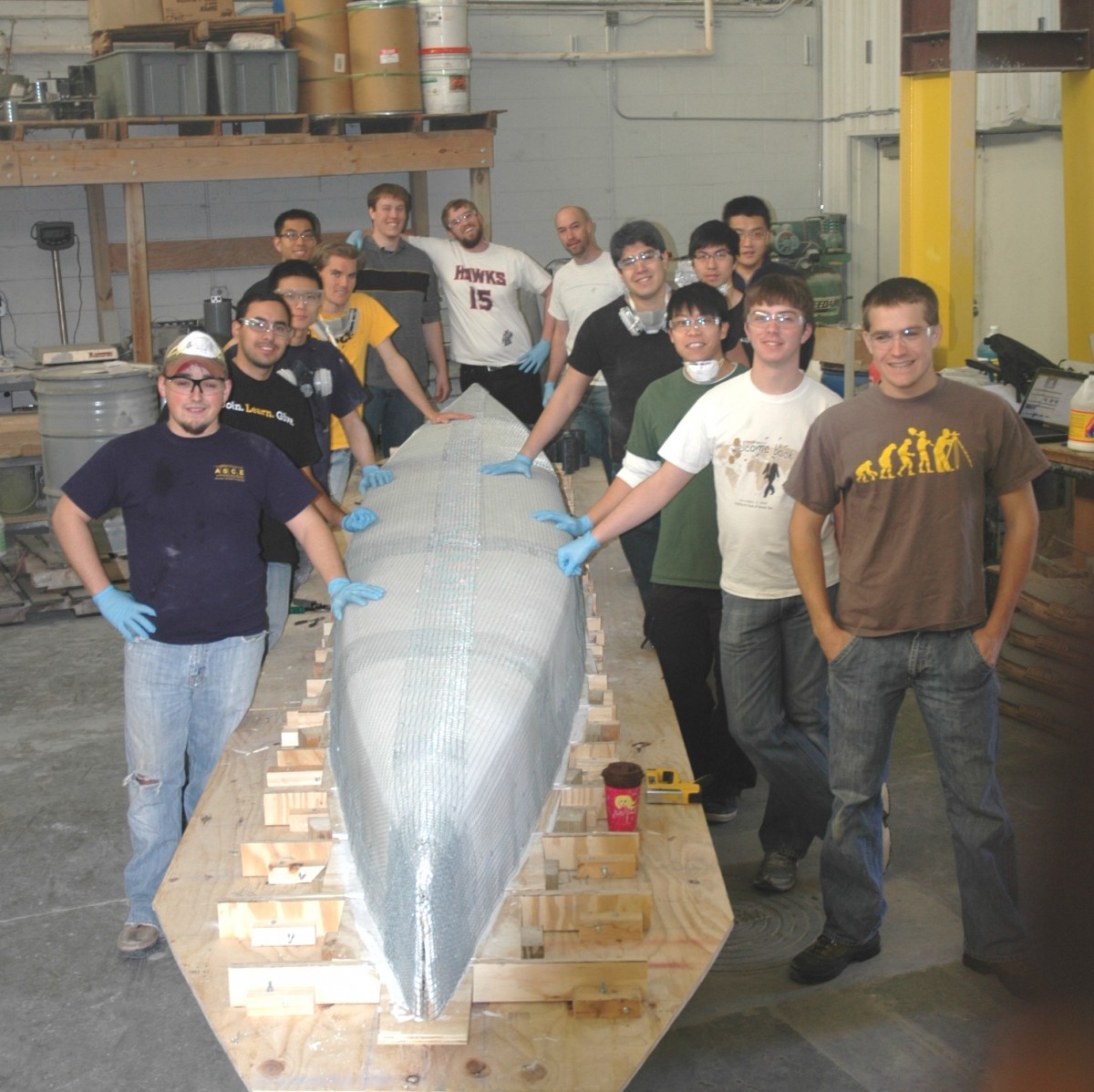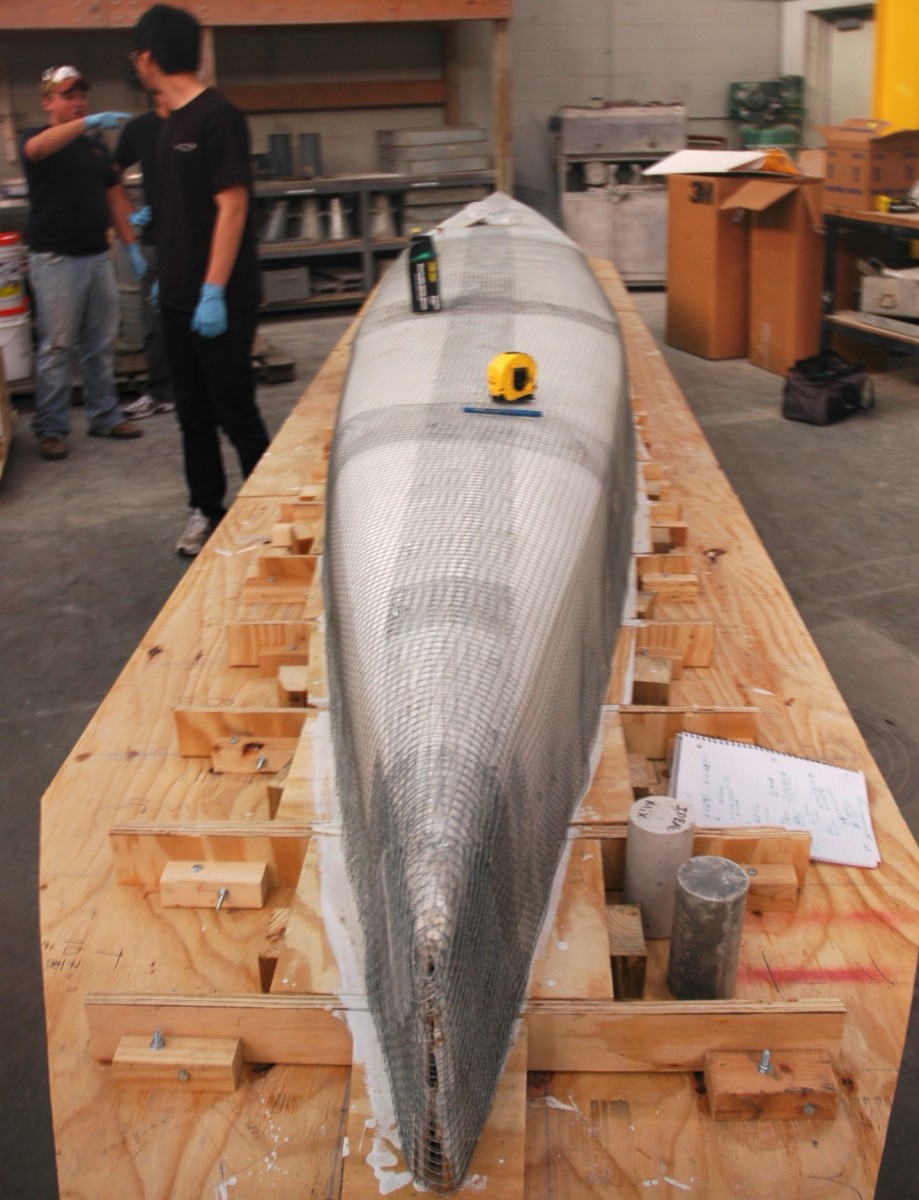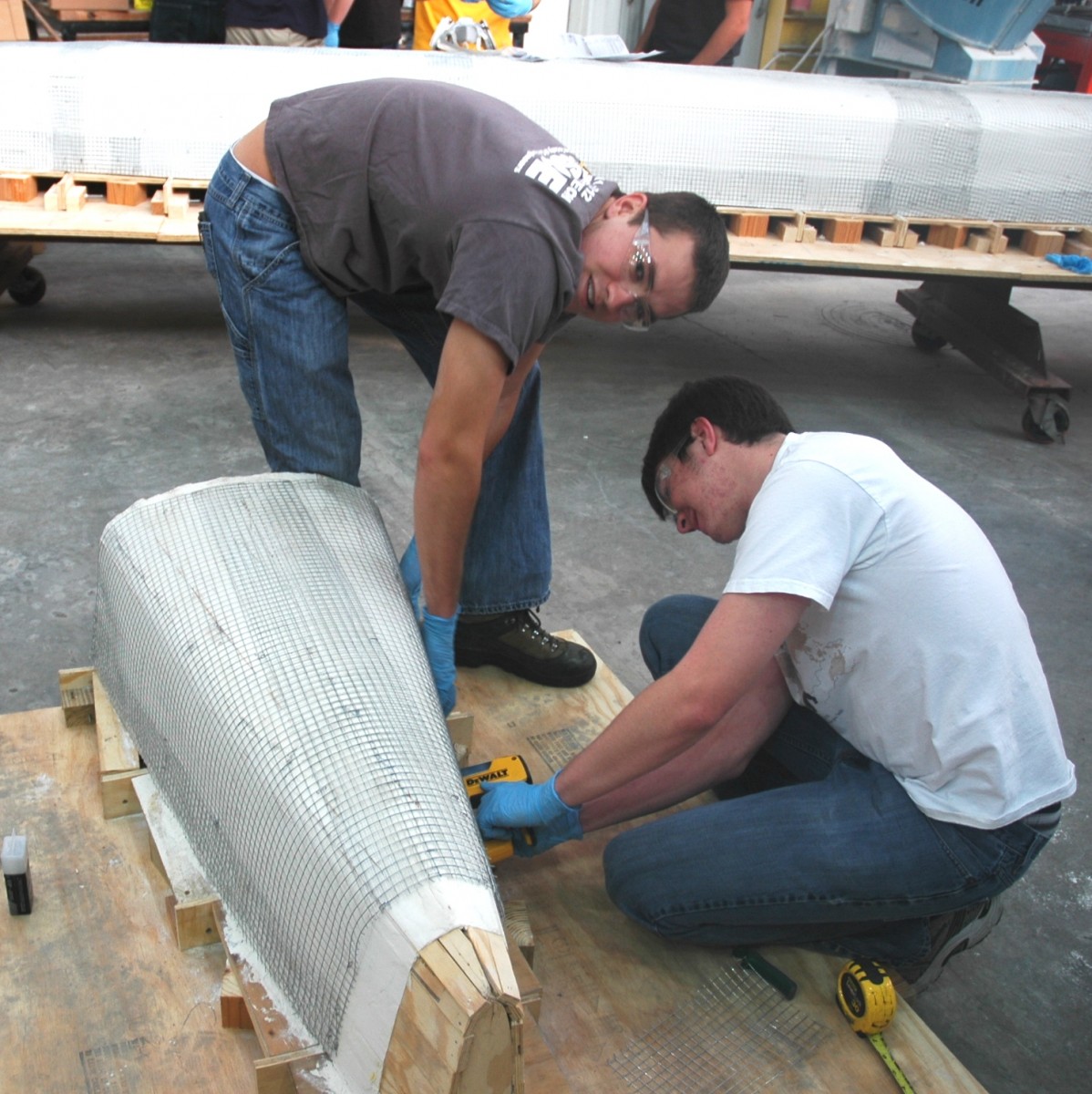A concrete canoe. Sounds like a lead balloon, right?
Not to an engineer. For the 26th year running, the Georgia Tech chapter of the American Society of Civil Engineers (ASCE) has constructed a concrete canoe - one that floats - to be entered in the ASCE Regional Concrete Canoe competition at the University of South Carolina on April 4-6.
For the 26th year running, the Georgia Tech chapter of the American Society of Civil Engineers (ASCE) has constructed a concrete canoe - one that floats - to be entered in the ASCE Regional Concrete Canoe competition at the University of South Carolina on April 4-6.
“A lot of people don’t understand that you can make concrete float,” said civil engineering major Christopher Kiser, co-captain of the Georgia Tech team.
“But alls you have to do is look at an ocean liner: they use thousands of pounds of concrete and they do just fine.”
Clearly, these students took more than a look at an ocean liner to get this project right.
The Georgia Tech ASCE chapter has been researching, refining and tinkering with their entry since last fall. On average, they’ve spent between five to eight hours a week on it - choosing materials, refining the construction process, and testing their assumptions.
“I developed my own mix design, which then allowed us to determine how much material we needed to get,” said team co-captain Andrew Johnson, a civil engineering major. “We began constructing the canoe mold at the start of this semester.”
The result?
 A 20.5-foot-long, 32-inch-wide canoe capable of floating when filled with water and winning when entered in the five scheduled races that are a part of the competition. Its half-inch thick concrete walls are reinforced with steel mesh but cannot contain any air pockets to make them more buoyant. An 85-page competition booklet describes the rest of the regulations – from allowable paint to permissible seating.
A 20.5-foot-long, 32-inch-wide canoe capable of floating when filled with water and winning when entered in the five scheduled races that are a part of the competition. Its half-inch thick concrete walls are reinforced with steel mesh but cannot contain any air pockets to make them more buoyant. An 85-page competition booklet describes the rest of the regulations – from allowable paint to permissible seating.
The Georgia Tech team will also submit a paper detailing the canoe's specs and make an oral presentation before judges -- all as part of the ASCE’s Regional Conference Competition.
The winner of ASCE’s April match-up will go to a national competition in Illinois this summer. In additon to bragging rights, the winning team will bring home thousands of dollars in scholarships.
Unlike competitors at some other schools, the GT/ASCE team will not receive any academic credit or course relief for the work they’ve poured into this canoe. It’s all for the love of engineering.
“That’s a good thing,” said Dr. Lawrence Kahn, a CEE professor and former advisor to the team. “This is about stretching their skills as engineers, not satisfying credit requirements.”
And, while experienced engineers like Kahn could easily give these students answers to their biggest questions, the faculty plays no such role in this project.
“We can give them advice, if they ask, but we don’t tell them how to make it work,” Kahn said. “That would destroy the spirit behind the project. It would rob them of the opportunity to learn.” Kahn happened to be in the Structures Lab one Saturday morning in March, when the team prepared to pour its concrete mixture into the wire mesh-and-wall-compound mold. This was a pivotal point in the process.
Kahn happened to be in the Structures Lab one Saturday morning in March, when the team prepared to pour its concrete mixture into the wire mesh-and-wall-compound mold. This was a pivotal point in the process.
“We’re trying to prevent cracking in the final product,” said Kiser. “Once you mix the concrete, the stop watch starts. If you finish one end, and it takes too long to get to the other, it could cure unevenly. That would be a deal-breaker. We figure we’ll be here about four hours today.”
Kiser admitted that he was in the Structures Lab until pretty late the night before. And he wasn’t alone.
“We wanted to make sure we had all of the materials ready.”
Identifying the right materials was another crucial component of the group’s mission. The aggregate they chose had to mix well with the cement, be durable, and be light.
“Last year I was on the team and we placed fourth, mainly because we used granite and sand. We were too heavy,” said Johnson.
“This year, I knew that if we wanted to place, we had to find something lighter. We asked our vendors to see if they had anything lighter, and they suggested Kentucky Solite – a shale aggregate. But that was not strong enough, so we had to find a second one. We decided on these glass microspheres, Poraver, because they’re light and mix well. We’re varying the size and densities to make it more durable.”
Both Johnson and Kiser predict that next year’s team will use an aggregate that is entirely comprised of microspheres.
“That will help a lot, I think,” said Johnson. “Just knowing the right materials makes a huge difference.”
